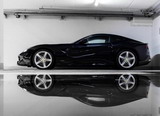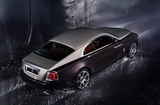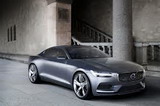What is coupe?
1. Car body style What is a coupe? What a dumb question! Everybody knows that! Or maybe not! Are you agree with that? An answer you become in the folowing sentences. [google468] Coupe (US) or Coupé (UK/EU) A 2-door, 2 or 4 seat car with a fixed roof. In some cases the rear seats are small and not intended for regular use; this is often called a 2+2.
A coupe (or coupé) is a two or four-seater car with a fixed roof and two doors. The style is generally used for sportier models in a manufacturer's range. In the 19th century, a coupé was a carriage with two doors enclosing seating for two with an exposed area on the front for a driver. In recent times it has become very common for a coupe's roof to slope down at the back in a shallow 'streamlined' fashion. This is sometimes called a 'fastback' design. Speakers of American English pronounce the word to rhyme with "sloop" (IPA) /ku:p/).and spell it without an accent. In Europe and the UK, the original French spelling and a semi-French pronunciation are often used — ( /'ku:pe?/).
A 2-door sedan is a 2-door car that is somewhere between a coupe and a 4-door sedan. This kind of vehicle had more legroom in the backseat that a coupe would generally have. Sedans with 2 doors are rather rare nowadays.
Historical body styles and alternative names Car manufacturers sometimes invent names for the body styles of their cars for the purpose of differentiating themselves from other manufacturers. These names are often, but not always, adaptations of other words and terms. The body styles themselves correlate closely to those listed above. Non-English terms Some non-English language terms are familiar from their use on imported vehicles in English-speaking nations even though the terms have not been adopted into English.
Drophead coupé As a coupé, but with a full convertible top. British terminology, and dropping out of use for most modern cars, though luxury British makes occasionally still use it. Compare American use of coupe convertible; contrast with fixed-head coupé.
Fixed-head coupé British term for a standard coupé with a fixed solid roof, as opposed to a drophead coupé.
Combi coupé is a car body style introduced by Saab. It is essentially a hatchback that is more of a saloon (sedan) than an estate car (station wagon) or typical hatchback. The type was first introduced in the Saab 99, but Saab also discussed making it available for the Saab 96 and went so far as to create the prototype Saab 98. Other vehicles exhibiting this form, though not the name, include the mid-1980s Mazda 626 and Saab 9000 hatchback. For the USA market this body style was called a "Waggon Back".
A coupe roadster is a convertible automobile equipped with a removable hardtop. Mercedes-Benz uses the term Coupe Roadster (note capitalization) to denote cars so equipped. These models always have a folding textile or vinyl soft top in addition. The hardtop usually includes the rear back glass and side quarter windows. It can usually be lifted on or off the car by two people, although typically a block and tackle garage mounted hoist is used. The soft top need not be deployed, nor can it be, when the hardtop is in place.
Sportshatch This term, which has been used by General Motors for several European models, has been applied to a number of body styles: A sporty liftback or hatchback (e.g. Opel Manta), and a sporty variant of a 2-door estate car (e.g. Vauxhall Magnum Sportshatch).
Berlinetta Italian term for a sports coupe. Ferrari differentiates between a normal coupe and a Berlinetta, or sports coupe. All Ferrari Berlinettas are 2-seat cars with tight cockpits.
Sedan A car seating four or more with a fixed roof that is full-height upto the rear window. Normally a 4 door; 2 door is rarer but they do occur (more so historically). This is the most common body style. In the U.S., this term has been used to denote a car with fixed window frames, as opposed to the hardtop style where the sash, if any, winds down with the glass. As hardtops have become rarer, this distinction is no longer so important.
Saloon The British English term for a sedan. 2. Car classification Car classification is a somewhat subjective subject, as many vehicles fall between classes or even outside all of them. Not all car types are sold in all countries and names differ in some cases between British and American English. The following are commonly used classifications within the Wikipedia. Where applicable, the relevant EuroNCAP classifications are shown.
A grand tourer, sometimes initialised GT, is a high-performance automobile designed for long distance driving. Any such car could be considered to be a grand tourer, but the traditional and most common body style is a two door coupe with either a two seat or a 2+2 seat arrangement. Example cars include the BMW 6-Series and the Aston Martin DB9. Grand tourers differ from sports cars in that they are usually larger, heavier and tend make less compromise in comfort for the sake of driving ability. For this reason they mostly have front-mounted engines that leave more space for the cabin than mid-mounted engines. They also tend to have softer suspension to provide good ride quality. However, grand tourers do have similarities with sports cars, such as the fact they mainly use rear or four wheel drive, and the term sports car may be used to describe a car with grand touring qualities. Very high-performance grand tourers, such as the Ferrari 575M Maranello, may be considered to be supercars. Gran turismo is Italian for grand tourer. The
Muscle car is a peculiarly American type of sports car, popular from the 1960s until a combination of spiralling insurance costs and the 1973 energy crisis largely killed off the category. A smaller offshoot, the Pony car, still exists in the form of the Ford Mustang. The epitome of brute-force power, these cars shoe-horned giant engines into mid-sized cars (by the then US standard) which were often, from the factory, inadequate to handle the power and performance; handling was subordinate to straight-line acceleration. Examples: • Chevrolet Camaro • Chevrolet Chevelle • Dodge Charger • Mercury Cougar • Plymouth Barracuda • Plymouth Road Runner • Plymouth Superbird • Pontiac GTO • Holden Monaro (Australia)
3. Vintage car A vintage car is commonly defined as a car built between the start of 1919 and the end of 1930. There is little debate about the start date of the Vintage period — the end of World War I is a nicely defined marker there — but the end date is a matter of a little more debate. The British definition is strict about 1930 being the cut-off, while some American sources prefer 1925 since it is the pre-Classic car period as defined by the Classic Car Club of America. Others see the Classic period as overlapping the Vintage period, especially since the Vintage designation covers all vehicles produced in the period while the official Classic definition does not, only including high-end vehicles of the period. Some consider the start of World War II to be the end date of the Vintage period. The Vintage period in the automotive world was a time of transition. The car started off in 1919 as still something of a rarity, and ended up in 1930 well on the way towards ubiquity; in fact, automobile production at the end of this period was not matched again until the 1950s. During this period, most industrialised nations built a nationwide road system, with the result that towards the end of the period, the ability to negotiate unpaved roads was no longer required. Cars became much more practical, convenient and comfortable during this period. Car heating was introduced, as was the in-car radio. Antifreeze was introduced, allowing water-cooled cars to be used year-round in colder climates. Four-wheel braking from a common foot pedal was introduced, as was the use of hydraulically actuated brakes. Power steering was also an innovation of this era. Towards the end of the Vintage era, the system of octane ratings of fuel was introduced, allowing comparison between fuels. During this period, as well as the car adapting, society began to adapt to the car. Drive-in restaurants were introduced, as well as suburban shopping centers, and motels began lining major roads in the United States.
4. Antique car An antique car is generally defined as a car over 25 years of age, this being the definition used by the Antique Automobile Club of America and many other organisations worldwide. The term classic car is often used synonymously with antique car, but the formal definition of that term has it as applying only to certain specific high-quality vehicles from the pre-World War II era. 25 years is about double the design life of modern cars and an even greater increment on those cars now 25 years old; therefore, a car that's reached 25 is a rare survivor, and probably not economic to maintain as regular transportation. Owning, restoring and collecting antique cars is a popular hobby worldwide.
5. Brass Era car The automotive Brass Era is the first period of automotive manufacturing, named for the prominent brass fittings used during this time for such things as lights and radiators. It extends from the first commercial automobiles marketed in the 1890's down to about World War I. These cars are also often called by the name they were originally known by, "horseless carriages." In the United Kingdom, this era is split into two periods; pre-1905 vehicles are veteran cars, while 1905-1918 vehicles are classed as Edwardian cars. Such very old vehicles present special challenges to today's collectors. Replacement parts must nearly always be handmade and basic documentation such as wiring diagrams and specification sheets are often nonexistent. The huge variety of companies and technologies represented during this formative period is also a complicating factor—it has been estimated that there were well over 1,000 manufacturers in the U.S. alone. Neverthess, an active collector community exists for these vehicles, which when well restored can be extremely valuable. The very, very rare original-condition survivor can be even more so. The early Ford Model T is an example of a Brass Era car for the mass market, and the early European Hispano-Suiza models are fairly typical of expensive models of the time. The gold-tone trim which is occasionally added to modern luxury sedans is a reference back to autodom's great Age of Brass. 
Coupe
Coupé
Cupé
Kupe
Kupé
Kupė
Купе
Купе
Купе
クーペ
쿠페
About Coupe Desire team:
http://www.coupe-desire.com/pdf/Info%20about%20our%20team.doc











